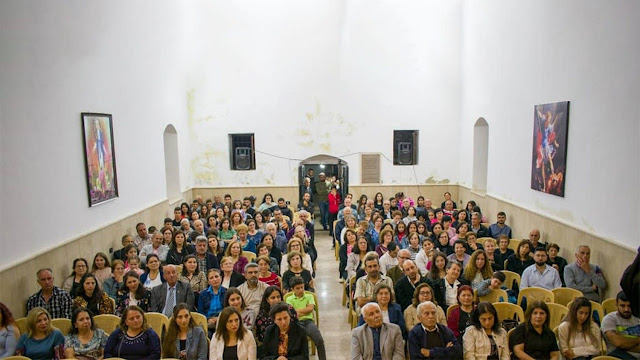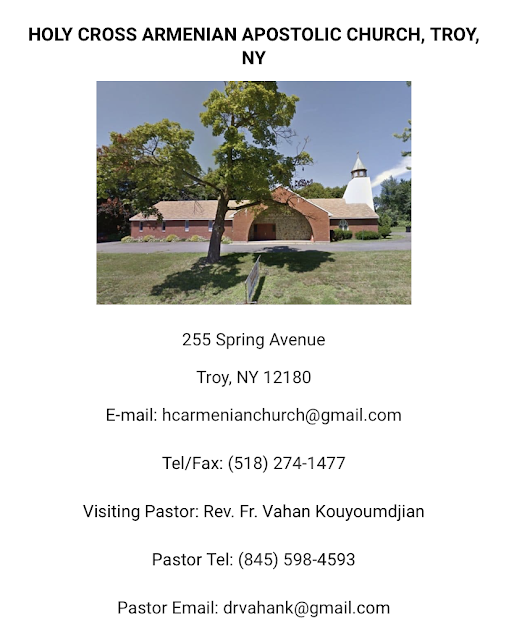Արմենակ Եղիայեան- armenag@gmail.com
1. Գլխագրում
(Հայերէնը կը զուարճանայ (124))
Գլխագրումը մեր ցաւոտ հարցերէն մէկն է, որ յարատեւ կը հալածէ մեզ առանց օրինականութեան ու միօրինակութեան ցանկալի մակարդակներուն հասնելու կամ մօտենալու. ամէն մարդ ազատօրէն եւ խելքին փչածին պէս կը գլխագրէ. հարցնող-դնող չկայ: Է՜հ, աշխարհը իրար անցած՝ գլուխը առեր կ’երթայ, հիմա ժամանա՞կն է գլխխագրերով զբաղելու:
Այսինքն՝ արեւմտահայուն խելքին ու ճաշակին ճիփ-ճիդ յարմարող կացութիւն մը, ուր մտածելու եւ տրամաբանելու ոչ մէկ հարկադրանք կայ եւ կարելի է բնազդաբար գրել:
Ստորեւ պիտի սերտենք զայն երկու մակարդակներու վրայ.
ա. Խորագրերու,
բ. Յատուկ անուններու:
* * *
Խորագիր
Արեւմտահայ իրականութեան մէջ կը գտնենք խորագրերը, մասնաւորաբար թերթերու, գրելու հետեւեալ ոճերը.
ա.Բոլոր բառերու բոլոր տառերու գլխագրում.
Օրինակ՝ ԿԱՑՈՒԹԻՒՆԸ ՀԵՏԶՀԵՏԷ ԿԸ ԼԱՐՈՒԻ
Այս ոճը շատ խոր արմատներ ունի մեր լրագրական եւ ընդհանուր առմամբ հայերէնի տպագրական մարզէն ներս: Սակայն ան ինքզինք սպառած, դահացած ըլլալ կը թուի, յատկապէս մամուլի մէջ, ուր նախընտրութիւնները հետզհետէ կ’երթան ստորեւ բերուած բ. տարբերակին:
բ.Միայն առաջին բառի առաջին տառի գլխագրում.
Օրինակ՝ Կացութիւնը հետզհետէ կը լարուի
Ահա այս ոճն է, որ սկսած է ընդհանրանալ՝ շնորհիւ իր ակնահաճոյ զուարթ տեսքին:
Այս ոճը որդեգրած լրագիրը աւելի հաղորդական է, աւելի առոյգ ու հրապուրիչ: Ամերիկայի մէջ հետզհետէ կը բազմանան ա. տարբերակը լքելով այս մէկին անցնողները: Մեր մէջ 3-4-ը չեն անցնիր անոնք, եւ ըմբռնելի չէ, թէ ինչո՛ւ կը տնտնան մնացեալները:
գ.Իւրաքանչիւր բառի սկզբնատառի գլխագրում.
Օրինակ՝ Կացութիւնը Հետզհետէ Կը Լարուի
Ոճերուն ամենազազրելին է այս, որ բացարձակապէս ոչ մէկ հայեցի աւանդոյթ ունի մեր լրագրական ու ընդհանրապէս տպագրական պատմութեան մէջ: Ան բոլորովին օտարամուտ է, յատկապէս ամերիկեան ծագումով: Մինչ հիմա ամերիկացիք հետզհետէ կը հեռանան անկէ, մեր մէջ կը գտնենք ստրկաբար անոր կառչած թերթեր:
***
Այս վերջին յոռի սովորութիւնը կը գտնենք գրական երկերէ բերուած խորագրերու ու մանաւանդ ոտանաւորէ առնուած ամբողջական տողերու վերարտադրութեան մէջ եւս. ինչպէս՝
--Կասկածը Կնոջ Մտքին Մէջ
--Ինչո՞ւ Անունդ Այստեղ Չկարենամ Գրել Ես
Ուր առաջին բառերու առաջին տառը գլխագրելէ բացի մնացեալները գլխագրելու բացարձակապէս ոչ մէկ պատճառ գոյութիւն ունի՝ ոչ քերականական, ո՛չ գեղագիտական:
Յատուկ անուններ
Հարցը կը վերաբերի բաղադրեալ յատուկ անուններու, այսինքն՝ այնպիսիներուն, որոնք կը գրուին մէկէ աւելի բառերով:
Օրինակ՝
--Միացեալ ազգերու կազմակերպութիւն (ՄԱԿ)
--Հայկական բարեգործական ընհանուր միութիւն (ՀԲԸՄ)
--Հայ մարզական ընդհանոր միութիւն (ՀՄԸՄ)
--Հայ երիտասարդաց ընկերակցութիւն (ՀԵԸ)
--Նոր սերունդ մշակութային միութիւն (ՆՍՄՄ)
Էապէս խորթ ու անընդունելի է ասոնց բոլոր բառերու սկզբնատառերը գլխագրելու մոլութիւնն ու ... մոլորութիւնը, քանի որեւէ պատճառ չկայ այդպէս շարժելու:
Փոքրատառով կը գրուի յատուկ անունները բնորոշող բառը.
--Արարատ լեռ, Մուսա լեռ
--Սեւ ծով, Կարմիր ծով
--Օրմանեան պատրիարք, Թորոս վարդապետ, Կիրակոս աբեղայ
--Սրբոց Քառասնից Մանկանց վարժարան
--Հայ կաթողիկէ Թորգոմեան վարժարան
Գեղարուեստական երկեր ու արտադրութիւններ
--«Նահանջը առանց երգի» (Շահան Շահնուր)
--«Մամայիդ բարեւ ըրէ» (Գրիգոր Զոհրապ)
--«Կարապներու լիճը» (Չայկովսկի)
Աշխարհագրական անուններ
Աշխարհագրական կողմերու պարզ անունները չեն գլխագրուիր՝
--արեւելք, արեւմուտք, հիւսիս, հարաւ
«Իսայէլ կը գտնուի լիբանանի հարաւը»:
«Այսօր պաղ հոսանք մը հասաւ հիւսիսէն»:
«Կարաւանը դէպի արեւելք ուղղուեցաւ»:
Անոնք կը գլխագրուին, երբ տարածք, շրջան ցոյց կու տան. օրինակ՝
«Արեւմուտքը ազգագրական տագնապ կ’ապրի»:
«Այդ տագնապը տակաւին չէ հասած Արեւելք»:
Չեն գլխագրուիր կողմերու բաղադրեալ անունները եւս.
--հիւսիս-արեւելք, հարաւ-արեւելք
--հիւսիս-արեւմուտք, հարաւ-արեւմուտք
Նկատել բաղադրիչներու միջեւ միութեան գծիկի կիրարկութիւնը:
Այս գծիկները կ’անհետանան, երբ այդ անունները ածականի կը վերածուին՝ --հիւսիսարեւելեան, հարաւարեւմտեան եւ այլն:
*****
Ուրեմն կը շարունակենք գլխագրումի բնաբանը:
(Հայերէնը կը զուարճանայ ( 125))
1. Կը գլխագրուին աշխարհագրական տարածք ցոյց տուող բարդ անուններու բոլոր բաղադրիչները.
--Փոքր Ասիա, սակայն՝ փոքրասիական
--Մերձաւոր Արեւելք, սակայն՝ մերձարեւելեան
--Ծայրագոյն Արեւելք
--Միջին Ասիա, սակայն՝ միջինասիական
--Վերին Եգիպտոս, Ստորին Եգիպտոս
--Հարաւային Արաբիա, սակայն՝ հարաւարաբական
--Հարաւային Ամերիկա, սակայն հարաւամերիկեան
--Հարաւային Ափրիկէ, սակայն՝ հարաւափրիկեան
--Արեւմտեան Հայաստան կամ Արեւմտահայաստան, արեւմտահայկական
--Արեւելեան Հայաստան կամ Արեւելահայաստան, արեւելահայկական
Արշակունի, մխիթարեան եւ նմանները չեն գլխագրուիր իբրեւ անհատական անուն. օրինակ՝ «Երկու մխիթարեաններ կը փորձէին ուղղել մեր սխալները»: Ասոնք կը գլխագրուին երբ կ’ակնարկեն այդ անունները կրողներու ամբողջութեան.
--Արշակունիները տուին մեր լաւագոյն թագաւորները:
--Մխիթարեաններուն կը պարտինք մեր վերահայացումը:
Տօնական օրերերու անունները առանձնաբար կը գլխագրուին, օրինակ՝ Ծնունդ, Զատիկ, Համբարձում, Հոգեգալուստ... ասոնք իբրեւ բառակապակցութիւն կու տան՝ Սուրբ ծնունդ, Սուրբ զատիկ, Նոր տարի, Մեծ պահք եւ այլն:
Կրնայ պատահիլ, որ նոյն անունը գրուի երկու տարբեր ձեւով իր շարադասութեան բերումով. օրինակ՝ Տրդատի դուռ, որ կամար մըն է Էջմիածնի բակին մէջ, եւ Դուռն Տրդատայ. Առաջինը աշխարհաբարեան արտասանութիւնն է, երկրորդը՝ գրաբարեան:
2. Կը գլխագրուին ժամանակակից կայացած տէրութեանց կամ գերտէրութեանց անուններու բոլոր բառերը. ինչպէս՝
--Միացեալ Նահանգներ (ՄՆ)
--Ռուսական Դաշնութիւն(ՌԴ)
--Եւրոպական Միութիւն (ԵՄ)
--Արաբական Միացեալ Էմիրութիւն (ԱՄԷ):
Չեն գլխագրուիր պատմական տէրութեանց անունները.
--Հռոմէական կայսրութիւն
--Բագրատունեաց հարստութիւն
--Օսմանեան տէրութիւն:
3. Միայն առաջին բառը կը գլխագրուի հոգեւոր կառոյցներու եւ նստավայրերու, որոնք կ’ընկալուին իբրեւ վերացական հասկացութիւններ.
--Հայ առաքելական եկեղեցի
--Հայաստանեայց (Հայց.) առաքելական սուրբ եկեղեցի
--Ընդհանրական եւ առաքելական եկեղեցի
--Հայ առաքելական եկեղեցւոյ Արարատեան թեմ
--Կաթողիկէ եկեղեցի
--Եհովայի վկաներ
--Աւետարանական եկեղեցի
--Առաքելական եկեղեցի
--Արեւելեան ուղղափառ եկեղեցիներ
--Մայր աթոռ Սուրբ Էջմիածին
--Սուրբ Էջմիածին Մայր աթոռ (կամ՝ տաճար)
--Մեծի տանն Կիլիկիոյ սուրբ աթոռը
Ծանօթ.− Աթոռ բառը կը գլխագրենք, երբ ան կ’անձնաւորուի եւ կը փոխարինէ ամբողջ բառակապակցութիւնը. օրինակ՝ «Աթոռս որոշեց սրբագործել անոր անունը»:
4. Չեն գլխագրուիր աշխարհիկ եւ հոգեւոր տիտղոսները.
--նախարար, վարչապետ, նախագահ
--եպիսկոպոս (եպս.), կաթողիկոս (կթղ.), ծայրագոյն վարդապետ (ծվ.)
--քահանայ (քհն.), քահանայապետ, պատուելի, վերապատուելի
--մոլլա, խախամ, քուրմ, քրմապետ, սուրբ, սրբուհի
Օրինակ՝ սուրբ Ներսէս Շնորհալի, սրբուհի Հեղինէ:
Գլխագրումը կը ջնջէ տուեալ տիտղոսին բառային նշանակութիւնը. օրինակ՝ Սուրբ Հեղինէ-ն կղզիի մը անունն է, այլ խօսքով՝ նիւթ մըն է. Սուրբ Նշան՝ անունն է համապատասխան քարաշէն դպրոցին կամ եկեղեցիին: Սակայն սուրբ Հեղինէ-ով կ’ակնարկուի Կոստանդիանոս կայսեր մօրը, որ իր կեանքով ու գործունէութեամբ ճանչցուած է իբրեւ սրբուհի, եւ սուրբ Նշան՝ այն հայ երանելին է, որ կը կրէ այս անունը եւ ունեցած է համապատասխան վարք ու կենցաղ:
5. Չեն գլխագրուիր կրօնական, քաղաքական, գաղափարական, կուսակցական, ազգային ու լեզուական պատկանելութիւն ցոյց տուող բառերը.
--քրիստոնեայ, իսլամ, հրեայ
--միապետական, հանրապետական,
--աջակողմեան, ձախակողմեան, յառաջդիմական, ժողովրդավար
--հնչակեան, դաշնակցական, ռամկավար-ազատական
--հայ, յոյն, արաբ, ֆրանսացի
--հայերէն, ֆրանսերէն, չինարէն
Ծանօթ.− Արեւմտեան կարգ մը լեզուներ կը զանազանեն ազգութիւն ցոյց տուող բառերեը, քանի որ այդ նոյն բառերը ցոյց կու տան նաեւ անոնց լեզուն. օրինակ՝ Français-français, English-english: Հայերէնը չունի այս շփոթը, քանի կ’ըսէ՝ հայ-հայերէն, յոյն-յունարէն...
Արմենակ Եղիայեան- armenag@gmail.com






























